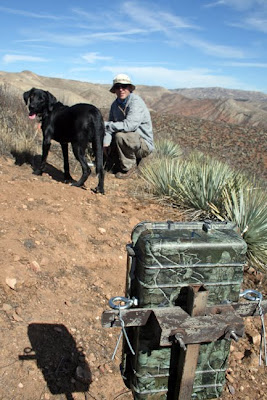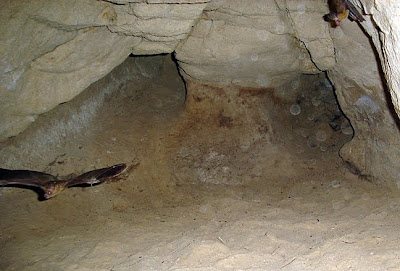
Just back from the ranch -- the Chimineas Ranch.
We rode the range and collected cams.
We did recces and saw new terrain.
Of the 11 new sets, we put two cameras in new habitat -- desert, where Spanish bayonet features prominently.
We also called in a Great Horned Owl, and of course Fred had a terrific time.
He retrieved his first elk antler.
In a prairie it's hard to miss an antler, but we saw it before Fred did.
When we opened the tailgate though, he jumped down and bee-lined to the branched bone like a good retriever.
There was none of that catch-me-if-you-can nonsense, either.
And for the first time we saw his border collie genes kick into action, a thrill.
We had just made set 308 on a high windy ridge and were heading back to the truck when we encountered 25 cows on the slope below.
Clearly they had a mission, and were no doubt heading for night pasture.
Fred crouched a few moments, then flew done slope like there was no tomorrow.
In no time he turned the herd around, and circled back to catch up a couple of stragglers.
He sent the old girls and their calves humping to where they came from.
For four days he sniffed countless scats, some with more interest than others.
But camera trap lures -- a concoction called Fox Butter and month-old mackerel in punctured cans were the most cherished.
He sniffed at them long and deeply, licked air, and dearly wanted a roll with them.
Chimineas has been good to us.
I never expected a back log of photos and blogging material, but the wildlife pics just keep rolling in.
So sit tight.
Next week we'll return to the guzzlers of Poison Water.


















































